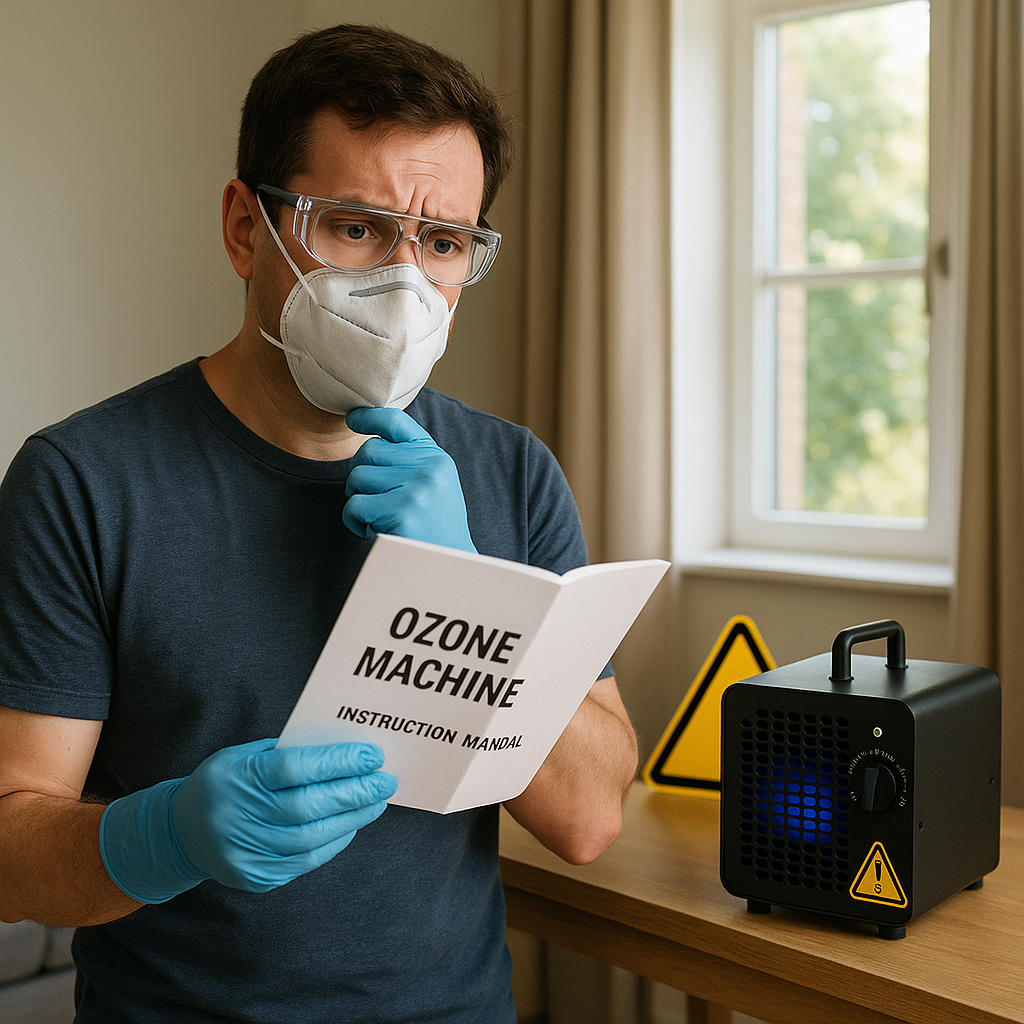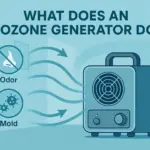Table of Contents
Is It Safe to Use Ozone for Killing Viruses Indoors?
What Makes Ozone Effective Against Viruses?
Ozone (O₃) is a triatomic molecule made of three oxygen atoms. That extra oxygen atom is unstable, making ozone highly reactive. This property allows ozone to:
- Break down the outer shell of viruses, especially enveloped viruses like influenza.
- Oxidize viral RNA or DNA, rendering the virus non-infectious.
- Sanitize both air and surfaces, reaching corners and cracks where sprays and UV light might not.
Ozone has been used in hospital settings, food sanitation, and water treatment for decades — all for its ability to kill pathogens.
Let’s look at what the science actually says about ozone’s virus-killing potential in real-world conditions.
What Do Studies Say About Ozone and Viruses?
There is solid scientific backing for ozone’s ability to kill viruses — but it’s mostly from controlled lab environments. Here’s what the research says:
- Influenza and SARS-CoV-2: Studies show that ozone concentrations of 1–5 ppm can inactivate viruses like influenza A and even coronaviruses, given enough exposure time and humidity.
- Ozone’s Mechanism: Ozone disrupts the viral envelope and oxidizes proteins and genetic material. It’s especially effective on enveloped viruses, which include many of the most dangerous airborne pathogens.
- Surface vs. Air Disinfection: Research confirms that ozone can neutralize viruses on hard-to-reach surfaces like fabric, ceilings, and electronics without wetting them — making it a useful dry-clean method in commercial and medical settings.
However, these studies also make one thing very clear: ozone disinfection only works safely when no humans or animals are present. Ongoing exposure, even at low levels, can harm respiratory health.
In real-world settings like homes or offices, these findings translate to: use ozone like a fogger — quick, strong, and strictly off-limits during use.
So Why Not Use It While People Are Around?
Ozone is not safe to breathe. While it’s powerful at destroying viruses, it doesn’t know the difference between a virus particle and the lining of your lungs.
Breathing in ozone can cause:
- Irritation of the eyes, nose, and throat
- Shortness of breath and coughing
- Asthma flare-ups
- Lung inflammation or damage at high levels
The EPA and OSHA both warn against indoor ozone exposure beyond very small, controlled limits — levels far below what’s needed for effective virus disinfection.
 How to Use Ozone Safely for Disinfection
How to Use Ozone Safely for Disinfection
Ozone disinfection can still be a tool in your virus-fighting toolkit — if you use it properly. Here’s a safe approach:
1. Vacate the Area Completely
All people, pets, and plants must be out of the space before ozone is generated. This includes adjacent rooms if air can circulate between them.
2. Seal Off the Treatment Area
Close all windows and doors to contain the ozone and increase its effectiveness. Use towels or weatherstripping to block airflow under doors.
3. Run the Ozone Generator
Set your generator according to the square footage of the space. More ozone does not mean better results — just more risk.
👉 Use our Ozone Generator Sizing Guide to find the right output for your room.
4. Allow for a Dissipation Period
Ozone doesn’t linger forever — it naturally breaks down into regular oxygen. Wait 1–4 hours after treatment (depending on ozone levels and ventilation) before re-entering.
5. Ventilate Before Reentry
Open windows and doors to air out the space. Run fans or your HVAC system to help flush residual ozone.
Ozone vs. Other Whole-Room Disinfection Methods
Even though ozone can work in unoccupied rooms, there are other disinfection methods that may be safer or more convenient for regular use. Here’s how ozone compares to other “no-touch” technologies:
| Method | Effective Against Viruses? | Safe While Occupied? | Penetrates Air + Surfaces? |
|---|---|---|---|
| Ozone | ✅ Yes (with proper dose) | ❌ No | ✅ Yes |
| UV-C Light | ✅ Yes (direct exposure) | ⚠️ Only in sealed HVAC or shielded units | ❌ No (line-of-sight only) |
| Hydrogen Peroxide Vapor | ✅ Yes | ❌ No | ✅ Yes |
Takeaway: Ozone is competitive with hospital-grade methods — but you must follow the safety rules. For daily use, stick with HEPA filtration and UV HVAC systems.
 When Ozone Works Best for Virus Control
When Ozone Works Best for Virus Control
Ozone is especially useful for virus cleanup in situations like:
- After someone in the household has recovered from illness
- Before reopening a business or rental space
- Disinfecting cars, offices, or hotel rooms between guests
- Treating items like masks, clothing, or tools (in a sealed container or room)
It is not a daily-use method — more like a deep-clean strategy when thorough disinfection is needed.
Better Daily Alternatives for Virus Prevention
Ozone isn’t your only option. In fact, it’s not the best choice for regular indoor use. Instead, consider:
- HEPA air purifiers, which trap airborne viruses and allergens
- UV light systems, which neutralize viruses in HVAC ducts
- Frequent ventilation, opening windows or using fans to bring in fresh air
- Surface disinfectants approved by the EPA for virus control
👉 Related reading: Pros and Cons of UV Light in HVAC: Is it Worth It?
A Real-Life Example: Post-Illness Cleanup
A BreatheBetterAir reader wrote in about using an ozone generator in their home office after recovering from pneumonia. They followed all safety steps: ran the machine overnight, sealed the room, and ventilated it the next morning. They noticed a distinct “clean” smell afterward, and no one else in the home got sick. While this isn’t proof that ozone killed the virus, it highlights how controlled ozone use can contribute to peace of mind and cleanliness.
Important Warnings
- Never use ozone in occupied spaces.
- Don’t use it as a substitute for proper hygiene, air filtration, or ventilation.
- Always follow your ozone generator’s instructions and safety guidelines.
When misused, ozone can cause more harm than good. But with knowledge and caution, it can be a helpful tool for serious disinfection jobs.
FAQ
Is it safe to run an ozone generator while sleeping?
Absolutely not. Ozone is harmful to breathe and should never be used in a room that is currently occupied — even while you sleep.
How long does ozone last in the air?
Ozone typically breaks down into oxygen within 30 minutes to 4 hours, depending on air circulation and temperature. Ventilation speeds up the process.
Will an ozone machine disinfect surfaces too?
Yes. Ozone can reach surfaces that sprays miss, including walls, ceilings, fabric, and hard-to-reach areas. It oxidizes viral particles on contact.
Bottom Line
Ozone is effective at killing viruses — but only in empty rooms.
Used incorrectly, it’s a health hazard. But used properly, it can be a valuable part of a deep-cleaning protocol after illness or in high-risk spaces.
👉 Learn more about ozone generators:
What Is an Ozone Machine? Benefits and Risks Explained


 When Ozone Works Best for Virus Control
When Ozone Works Best for Virus Control


